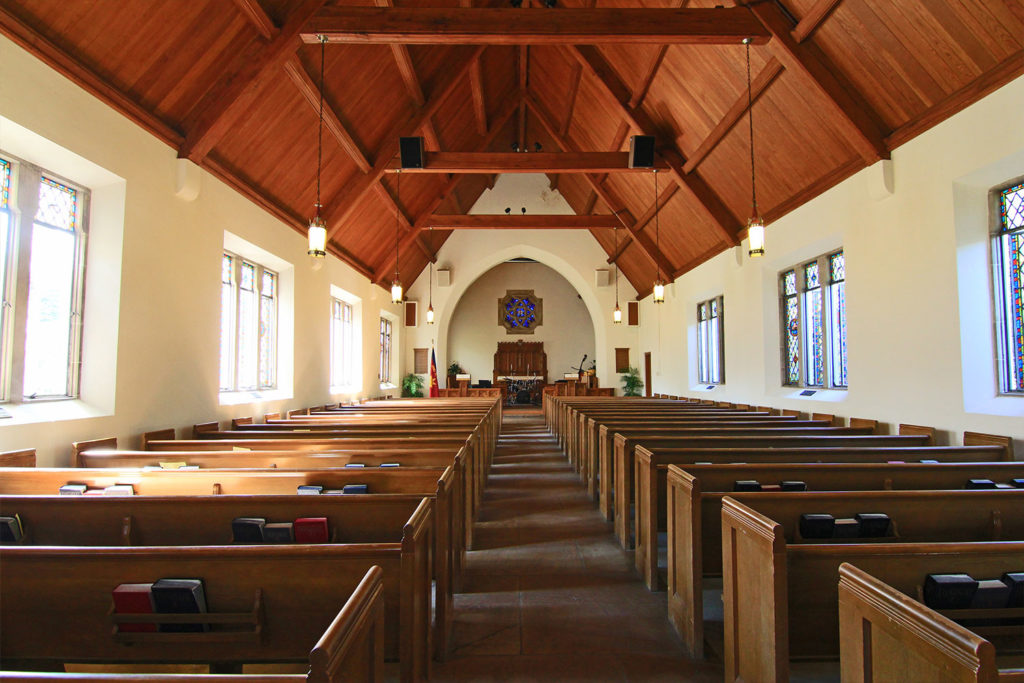By Bill Gordon
Introduction
Denominationalism is an American phenomenon. Immigrants who brought the beliefs and practices of their old state church to America started many denominations. Many of these churches had offshoots and the number of denominations has mushroomed. This bulletin will look at only a few of the denominations found currently in America.
DENOMINATION: Baptists
Statistics:
American Baptist Association (760) 275,000
American Baptist Churches in the U.S.A. (5,659) 1,371,278
Baptist Bible Fellowship International (4,500) 1,200,000
Baptist Convention of Onterio and Quebec (363) 43,513
Baptist General Conference (902) 145,148
Baptist General Conference of Canada (103) 7,500
Baptist Missionary Association of America (1,254) 225,723
Baptist Union of Western Canada (155) 20,427
Canadian Baptist Ministries (1,133) 129,055
Canadian National Baptist Convention (245) 11,578
Conservative Baptist Association of America (1,200) 200,000
Convention of Atlantic Baptist Churches (Canada) (539) 62,766
Fellowship of Evangelical Baptist Churches in Canada (497) 71,073
Free Will Baptists, National Association of (2,399) 187,193
General Assn. of Regular Baptist Churches (1,383) 132,900
General Baptists, General Association of (604) 60,559
National Baptist Convention of America (not available) 3,500,000
National Baptist Convention, U.S.A. (9000) 5,000,000
National Missionary Baptist Convention of America (not available) 2,500,000
North American Baptist Conference (272) 47,150
Progressive National Baptist Convention (2,000) 2,500,000
Separate Baptists in Christ (100) 8,000
Seventh Day Baptist General Conference (96) 5,200
Southern Baptist Convention (44,223) 16,306,246
History:
Baptists have been classified as part of the radical reformation because of their objection to sacramentalism, infant baptism, and the union of church and state. The first Baptist church in England was formed in 1611 when followers of John Smyth returned from Holland. Baptists have been influenced by both Arminian (General Baptists) theology and by Calvinistic (Particular Baptists) theology. The American Baptist Home Mission Society was formed in 1832. Baptists in the North and South separated in 1845 over the issue of slavery.
Authority: The Bible is the sole source of authority for Baptists.
Religious Practices: Baptists observe two church ordinances. The first church ordinance is believer’s baptism by immersion. The second church ordinance is the Lord’s Supper. Baptists have a congregational form of church government. The members of each local Baptist church make decisions for the church through democratic votes. Each church is autonomous.
Religious Tenets: Baptism is only to be performed on those who have made a conscious decision to follow Jesus Christ through faith and repentance. Since the Bible is their sole authority, Baptists reject authoritarian creeds. They have, however, issued statements of faith that represent the beliefs of most Baptists. Baptists believe that the government should not be involved in the establishment of religion. Traditionally, Baptists have taken stands against the consumption of alcohol, tobacco, illegal drugs, and in recent years, many have argued against abortion.
DENOMINATION: Churches of Christ (Disciples of Christ)
Statistics:
Christian Church USA (Disciples of Christ) (3,774) 451,126; Canada: 6,857
Churches of Christ USA: (15,000) 1,500,000
History:
Churches of Christ grew out of the Disciples of Christ movement that began in the early nineteenth century. They are part of the Restoration Movement that Thomas Campbell and his son, Alexander, helped establish. In 1832, they united with many of the followers of Barton Stone and later became known as the Disciples of Christ. In the early twentieth century, some Disciples of Christ felt their movement had drifted away from its original purpose. In 1906, a group led by David Lipscomb asked Federal census takers not to list Churches of Christ with the Disciples of Christ. This marked the beginning of Churches of Christ as a distinct group from the Disciples of Christ.
Authority: The Churches of Christ claim the Bible as their sole authority. Their byword is “Where the Scriptures speak, we speak; where the Scriptures are silent, we are silent.”
Religious Practices: The Lord’s Supper is one of the three elements central in Churches of Christ worship. The other two elements are preaching and believer’s baptism by immersion in a Church of Christ. They observe the Lord’s Supper each week. Churches of Christ have a congregational form of church government. Each local church is autonomous and self-governing. They have no formal denomination structure beyond the local church. The Churches of Christ do not view themselves as a denomination. They claim to observe no rituals that were not practiced in the first century church. Those associated with the Churches of Christ reject the use of instruments in worship.
Religious Tenets: They are Arminian in their theology. They believe people are free to accept or reject God’s offer of salvation. Each person must cooperate with God’s offer through his or her own response of faith, repentance, and baptism. Many understand faith as an intellectual acceptance of the biblical facts about Jesus. Churches of Christ teach that baptism by immersion for believers is essential for the remission of sins and is necessary for salvation. They believe that Christians may sin in such a way that they lose their salvation.
DENOMINATION: Eastern Orthodox
Statistics:
Albanian Orthodox Diocese of America – 1,995
The American Carpatho – Russian Orthodox Greek Catholic Church-13,327
Antiochian Orthodox Christian Archdiocese of North America – 65,000
Armenian Apostolic Church of America – 200,000
Armenian Church of America, Diocese of the – 414,000
Coptic Orthodox Church – 180,000
Greek Orthodox Archdiocese of America – 1,954,500
Orthodox Church in America – 1,000,000
Romanian Orthodox Episcopate of America – 65,000
Serbian Orthodox Church in U.S.A. and Canada – 297,000
Syrian Orthodox Church of Antioch (Archdiocese of the U.S.A. and Canada) – 36,000
History: The Orthodox Church traces its origin to the establishment of the Christian Church on the Day of Pentecost. They separated from the western Latin Church in A.D. 1054.
Authority: Scriptures and sacred Tradition, especially as recorded in the writings of the Church Fathers.
Religious Practices: The Orthodox Church recognizes seven sacraments or mysteries. The sacraments of the Orthodox Church are the Eucharist, baptism, chrismation, ordination, penance, marriage, and holy oil for the sick. They believe that the elements of the sacraments become grace filled through the power of the Holy Spirit. Icons are used because they reject statues as religious objects. Orthodox clergy may marry before ordination.
Religious Tenets: The Orthodox Church rejects both the supremacy of the Bishop of Rome as well as his papal infallibility. Mary’s immaculate conception is rejected because of their opposition to the doctrine of original sin. The perpetual virginity of Mary is affirmed, as well as her bodily assumption. She is also given the title “Mother of God.” They also reject the Roman Catholic doctrine of the filioque that states the Holy Spirit proceeds from the Father and the Son. Instead, the Orthodox Church maintains that the Holy Spirit proceeds only from the Father.
DENOMINATION: Episcopal Church (a branch of the Anglican Church communion)
Statistics USA: (7,095) 1,796,017; Canada: (2,884) 641,845
History: The Anglican Church originated when Henry VIII separated the English Church from Rome. The Episcopal Church, distinct from the Church of England, came into existence after the American Revolution. In 1976, the Episcopal Church began ordaining women to the priesthood. In 1988, the church ordained its first female bishop.
Authority: The Episcopal Church believes the Bible is divinely inspired; however, the church allows its members great freedom in interpreting its doctrines. The Nicene and Apostles’ Creeds are accepted.
Religious Practices: Two main sacraments of the Episcopal church are baptism and the Eucharist. Infants are baptized and several modes of baptism are acceptable. The Episcopal Church consists of a union of autonomous dioceses and each diocese elects a bishop as its religious leader. Each parish elects a rector who oversees the local congregation. The worship service follows the Book of Common Prayer, with the most important part of the service being the Eucharist. The Episcopal Church has great diversity in its worship. Some churches are liturgical with a complex ritual, while other churches are more informal.
Religious Tenets: While the Episcopal Church accepts the Bible and the historic creeds of the church, it gives members freedom in doctrinal beliefs. The use of the Book of Common Prayer in worship is stressed more than the acceptance of particular beliefs.
DENOMINATION: Lutherans
Statistics:
Church of the Lutheran Brethren of America (110) 8,907
Church of the Lutheran Confession (87) 6,365
Estonian Evangelical Lutheran Church (21) 3,508
Evangelical Lutheran Church in America (10,470) 3,580,402
Evangelical Luthern Church in Canada (623) 174,555
Evangelical Lutheran Synod (138) 16,319
Free Lutheran Congregations, Association of (267) 32,165
Latvian Evangelical Lutheran Church in America (60) 10,800
Lutheran Church of Canada (329) 54,955
Lutheran Church—Missouri Synod (6,155) 1,856,783
Lutheran Churches, American Association of (73) 12,400
Wisconsin Evangelical Lutheran Synod (1,276) 311,977
History:
Lutheranism began in 1517 with the religious revolution begun by Martin Luther in Wittenberg, Germany. Luther’s followers became numerous in Germany and Scandinavia. As people from these countries came to America they established Lutheran churches.
Authority:
One of the key differences between Luther and the Roman Catholic Church was the issue of authority. Luther argued that the Scripture was the sole authority for determining belief and practice. The 1580 Book of Concord is the normative statement of Lutheran beliefs.
Religious Practices:
Baptism is necessary for spiritual regeneration. The sacramental view of the Lord’s Supper is retained but transubstantiation is rejected. There is diversity among Lutherans in church government. They range from congregational to Episcopal in church government. There is no uniform liturgy among Lutherans. The altars and vestments from Catholicism have been retained. The preaching of the Word is considered the most important part of the worship service.
Religious Tenets:
Traditionally, Lutherans have believed in the sufficiency of Scripture alone as the guide to religious truth. They have also emphasized that redemption comes through faith alone and that the church sacraments are only helps to faith. Luther rejected the Catholic doctrine of transubstantiation. Transubstantiation claims that the elements of the Lord’s Supper literally become the body and blood of Jesus during the Eucharist, though their outward or physical characteristics do not change. Luther instead advocated consubstantiation to describe the Lord’s Supper. This view argues that the elements are conjoined with the body and blood of Christ.
DENOMINATION: Methodist/Wesleyan
Statistics:
African Methodist Episcopal Church (4,174) 1,857,186
African Methodist Episcopal Zion Church (3,310) 1,217,508
Allegheny Wesleyan Methodist Connection (103) 1,471
Church of God (Anderson, IN) (2,215) 249,845
Evangelical Methodist Church (108) 7,348
Free Methodist Church of North America (991) 65,802
Primitive Methodist Church, U.S.A. (72) 3,833
Southern Methodist Church (101) 6,000
United Methodist Church (34,397) 7,995,456
United Church of Canada (3,527) 593,600
The Wesleyan Church (USA) (1,626) 116,151; Canada: (89) 5,977
History:
In 1729, a group of students at Oxford University in England began meeting together for methodical prayer and Scripture reading. They were called Methodists because of their methodical approach towards prayer and Bible study. Methodism as a popular religious movement began in 1738 when John and Charles Wesley began evangelistic preaching. The Wesleys were ordained ministers of the Church of England. Their followers in America became an independent denomination after the American Revolution.
Authority:
Methodist beliefs are derived from Scripture as enlightened by tradition, personal experience, and reason.
Religious Practices:
Methodists have two sacraments which they believe are symbols and pledges of God’s love: baptism and communion (Lord’s Supper). Methodists practice infant baptism. The Lord’s Supper is a memorial of the suffering and death of Jesus Christ. Methodists have an Episcopal form of church government that is similar in many ways to the organization of the federal government. United Methodists, for example, have the General Conference as their top legislative body, with the nine members of their Judicial Council functioning as a supreme court. The Council of Bishops of the United Methodist Church acts as an executive branch. There is a variety of worship styles among Methodists.
Religious Tenets:
Methodists are Arminian in theology following the teachings of John Wesley. They believe that God’s prevenient grace precedes salvation and makes it possible for the sinner to respond to the gospel. Methodists also believe that it is possible for Christians to sin in such a way that they lose their salvation.
DENOMINATION: Pentecostals
Statistics:
Apostolic Faith Mission (Portland, OR) (54) 4,500
Apostolic Faith Mission Church of God (18) 8,100
Assemblies of God (12,311) 1,627,932
Bible Church of Christ (6) 4,150
Church of God (Cleveland, Tenn.) (6,569) 1,032,550
Church of God in Christ (15,300) 5,499,875
Church of God of Prophecy (1,871) 84,762
Congregational Holiness Church (225) 25,000
Church of the Foursquare Gospel (1,875) 255,773
Open Bible Standard Churches (330) 40,000
Pentecostal Assemblies of Canada (1,108) 62,062
Pentecostal Assemblies of the World (Oneness) (1,750) 1,500,000
Pentecostal Church of God (1,170) 40,000
United Pentecostal Church International, (Oneness) (4,358) 646,304
History:
The first contemporary instance of speaking in tongues occurred in 1901 in Topeka, Kan., under the ministry of Charles Parham. In 1906, speaking in tongues broke out among the followers of William J. Seymour in Los Angeles, Calif. They rented a building on Azusa Street and quickly grew, attracting much attention. From this group, the modern day practice of speaking in tongues spread across the world. The term “Pentecostalism” refers to a broad movement of groups concerned with speaking in tongues and Holiness.
Authority:
The Scripture, and in some cases new revelations given by the Holy Spirit.
Religious Practices:
Baptism by the Holy Spirit, as evidenced by speaking in tongues, is sought by Pentecostals. Most Pentecostal groups observe baptism (usually by immersion) and the Lord’s Supper. There is diversity in church government among Pentecostal groups, but many are congregational. The worship style is very spontaneous and informal, and speaking in tongues will often occur during Pentecostal worship services.
Religious Tenets:
Pentecostals believe that all of the gifts of the Holy Spirit mentioned in the Bible are active and present in the church today. They claim that the Baptism of the Holy Spirit is manifested by speaking in tongues. Pentecostals tend to be Arminian in theology with an emphasis on perfectionism and holiness. While many Pentecostals believe in the doctrine of the Trinity, Oneness Pentecostal groups reject it.
DENOMINATION: Presbyterian (Reformed Churches)
Statistics:
Associate Reformed Presbyterian Church (General Synod) (256) 35,211
Cumberland Presbyterian Church (748) 81,034
Cumberland Presbyterian Church in America (152) 15,142
Evangelical Presbyterian Church (182) 65,924
Korean Presbyterian Church in America (302) 38,500
Orthodox Presbyterian Church (255) 20,850
Presbyterian Church in America (1,621) 266,166
Presbyterian Church in Canada (952) 120,458
Presbyterian Church (U.S.A.) (11,903) 2,267,118
Reformed Church in America (891) 163,160
Reformed Church in Canada (40) 3,753
Reformed Presbyterian Church of North America (80) 4,542
History:
John Calvin laid the theological foundations for Presbyterianism and other Reformed Churches in Switzerland during the sixteenth century. Calvin emphasized the sovereignty of God in all matters. Presbyterianism is the name given the church established by the followers of Calvin in Scotland. Under the leadership of John Knox, the Presbyterian Church became the official church of Scotland. The Presbyterian Church was planted in America as Scottish and Scottish-Irish immigrates arrived in the British colonies.
Authority:
The Scripture is their sole source of authority.
Religious Practices:
Presbyterians practice baptism (including infants) and the Lord’s Supper with the elements symbolizing Christ’s spiritual presence. Their worship services have little liturgy and the sermon is considered the most important part of the service.
Religious Tenets:
The Westminster Confession of Faith summaries the established Presbyterian beliefs. Their Calvinistic theology has traditionally been summarized by the acrostic TULIP: Total depravity, Unconditional election, Limited atonement, Irresistible grace, and Perseverance of the saints.
DENOMINATION: Roman Catholic
Statistics:
Canada: (5,391) 12,987,634
USA: (19,044) 67,515,016
History:
Roman Catholics claim the Apostle Peter, the first Bishop of Rome, founded their church. Secular historians date the beginning of the Roman Catholic Church as an institution (with centralization and papal authority) to the fifth and sixth centuries.
Authority:
Scripture, Tradition, and the Magisterium (teaching authority) of the church are the three sources of authority for the Roman Catholic Church.
Religious Practices:
There are seven sacraments in the Roman Catholic Church: baptism (includes infant), confirmation, Eucharist (Mass), penance (confession), matrimony, holy orders, and the anointing of the sick. Roman Catholic services are liturgical, but since Vatican II, the services are performed in the language spoken by the parishioners. The Bishop of Rome is the head of the Roman Catholic Church.
Religious Tenets:
Roman Catholics affirm the triune nature of the God of the Bible. They believe that the pope is capable of making infallible statements on matters of faith. They maintain that Mary was born without original sin, that she continued as a virgin throughout her life, and that at the end of her days on earth she was taken up body and soul into heaven. Catholics believe that Mary and other saints can hear their prayers. Roman Catholics also distinguish between mortal and venial sin. Mortal sin destroys the sanctifying grace of God within the individual and necessitates forgiveness through the sacrament of penance. Venial sin is a sin that either is not serious, or does not involve full knowledge or complete consent. Unlike mortal sin, it does not destroy the saving grace of God in the individual.
DENOMINATION: United Church of Christ
Statistics: (5,452) 1,218,541
History:
The United Church of Christ is the result of several mergers involving four distinct denominations. The last merger occurred in 1957 and established the United Church of Christ. The four denominations making up this new church are the Congregational, Christian, Evangelical Synod, and the Reformed Church.
Authority:
The Scripture is their source of authority. But members are free to follow their own perception of God’s will.
Religious Practices:
Baptism (including infant) and the Lord’s Supper is observed by the United Church of Christ. They tend to have simple worship services with the sermon as the central focus. Their churches are free to act in accordance with the collective decision of its members.
Religious Tenets:
The United Church of Christ adopted a non-binding statement of faith in Oberlin, Ohio in 1959. It stresses the priesthood of all believers and the freedom of members to believe and act in accordance with their perception of God’s will. The church also encourages its members to work for justice and the liberation of all people.
All statistics are from the 2008 Yearbook American & Canadian Churches, © National Council of the Churches of Christ in the USA.
Published March 30, 2016




